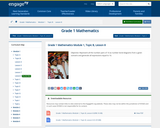
Represent all the number pairs of 10 as number bond diagrams from a given scenario and generate all expressions equal to 10.
- Subject:
- Mathematics
- Material Type:
- Learning Task
- Author:
- Engage New York
- Date Added:
- 04/24/2018

Represent all the number pairs of 10 as number bond diagrams from a given scenario and generate all expressions equal to 10.
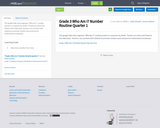
This google slide show organizes "Who Am I?" number puzzles in a sequence by weeks. Puzzles are online and linked to this slide show. Teachers can use these with students to promote number sense and precise mathematical vocabulary.
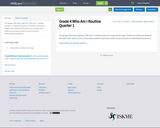
This google slide show organizes "Who Am I?" number puzzles in a sequence by weeks. Puzzles are online and linked to this slide show. Teachers can use these with students to promote number sense and precise mathematical vocabulary.
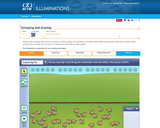
This intereactive Flash applet helps children learn grouping, tally marks, place value, addition, and subtraction. Students help the alien spaceship move cows into corrals by counting by 5s and 10s. They also can apply those grouping skills to practice adding and subtracting two-digit numbers with regrouping. Audio cues and prompts reinforce the user's actions and facilitate counting and the development of math language.

In this math lesson, learners read the book "How Big Is a Foot?" by Rolf Myller to explore the need for a standard unit of measure. Students then create non-standard units (using their own footprints) and use the footprints to make "beds." This lesson guide includes a student activity sheet, questions for learners, assessment options, extensions, and reflection questions.
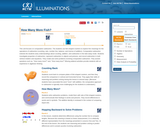
The activities in this 6-lesson unit use fish-shaped crackers to help students develop their understanding of comparative subtraction by exploring five meanings of subtraction (counting, sets, number line, balance, and inverse of addition). Students investigate properties of subtraction, represent subtraction with objects and pictures, record subtraction with vertical notation and equations, create and solve problems, and carry out missing addend activities. Lessons include questions for student discussion and teacher reflection, extensions, printable student sheets, assessment options, and links to online applets.
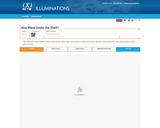
This interactive Flash applet helps students develop number sense and fluency with addition and subtraction facts within 10. Okta hides some bubbles under a shell, and then either adds more bubbles or takes some away. Students determine how many bubbles are left under the shell. Users can choose a specific one-digit starting number or let the applet choose randomly. Users can select addition, subtraction or both.
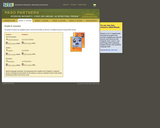
This bilingual curriculum and resources guide and is designed to help elementary school teachers organize instruction to increase achievement of Hispanic primary-grade children whose first language is not English. The guide offers a curriculum plan, instructional strategies and activities, suggested teacher and student materials, and assessment procedures. Because language development is a fundamental co-requisite for learning mathematics and science concepts, processes and skills, the lessons in many instances begin with literature (e.g., stories, books) and discussion activities that set the stage for posing questions and presenting conflicting situations related to the Big Ideas in mathematics and science that are the focus of the lesson.
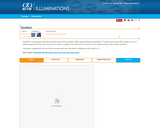
KenKen is a puzzle game that helps students develop whole number calculation skills, logical thinking and perseverance. Users complete the interactive grid with the digits 1-4 (or 1-6) so that each digit appears exactly once in each row or column, while also forming a target number using a specific operation. This page provides four new KenKen puzzles daily with a range of difficulty. Each puzzle includes instructions, rules, and a print option.
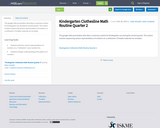
This google slide presentation describes a numeracy routine for Kindergarten use during the second quarter. The routine involves sequencing various representations of numbers on a clothesline. Printable materials are included.
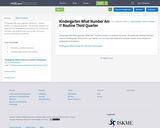
This google slide show organizes "What Am I?" number puzzles in a sequence by weeks. This particular selection has been chose for Kindergarten, third quarter use. Teachers can use these with students to promote number sense and precise mathematical vocabulary.

This google slide show organizes "Would You Rather?" questions in a sequence by weeks. Teachers can use these with students to promote number sense and precise mathematical vocabulary. Students will construct viable arguments and discuss their choices mathematically.

This google slide show organizes "Would You Rather?" questions in a sequence by weeks. Teachers can use these with students to promote number sense and precise mathematical vocabulary. Students will construct viable arguments and discuss their choices mathematically.
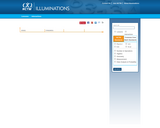
In this unit of 8 lessons, students make groups of zero to 10 objects, learn number names for the groups, compose and decompose numbers, and practice writing numerals to record the size of a group. Each lesson includes visual, auditory, and kinesthetic activities and supporting materials, questions to facilitate student thinking and teacher reflection, assessment suggestions, and a link to online applets that support the unit.
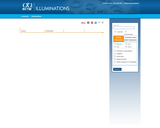
In this 6-lesson unit students develop concepts of number, relationships between numbers, and equality. They make groups of 10 to 20 objects, connect number names to the groups, compose and decompose numbers, and use numerals to record the size of a group. Each lesson includes visual, auditory, and kinesthetic activities, as well as student activity sheets, questions for teachers and students, ideas for assessment and extensions, and links to electronic applets.

In this 5-lesson unit students make groups of zero through five objects and connect number words to the groups. They develop counting strategies and use numerals to record the size of a group. Lessons include familiar nursery rhymes and songs, links to interactive applets, and visual, auditory, and kinesthetic activities. Also included are student activity sheets, questions for students and teachers, assessment and extension ideas.
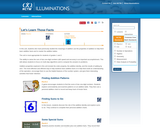
This 5-lesson unit is intended to help children who already understand the meanings of addition to develop fluency with addition facts. The activities and games take advantage of commutativity, the additive identity, doubles, and number patterns to develop operation sense and foster retention. Lessons include student materials, questions for students and teachers, assessment ideas, and links to interactive applets.
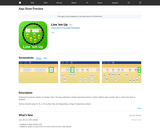
Designed to promote kindergarteners' mastery of number order. This app replicates a simple classroom activity in which children place number tiles in order from least to greatest. Options include using 10, 15, or 20 number tiles and designating a range of beginning numbers.
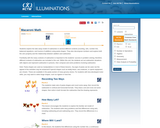
In this 6-lesson unit students use pasta shapes to explore the take away model of subtraction in several different contexts (counting, sets, number line, balanced equations, and inverse of addition). They decompose numbers, explore the zero property, act out subtraction situations with objects and pictures, record differences with vertical and in horizontal notation, create fact families, find differences with a calculator, and compose and solve problems involving subtraction. The lessons include student activity sheets (pdf), questions for student discussion and teacher reflection, assessment options, and links to online applets.
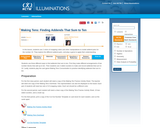
In this lesson students find and record addends that sum to ten in three different activities, using ten frames, linking cubes, two-sided counters, and a concentration game. The lesson includes suggestions for assessment and extension, reflection questions for students and teachers, links to related resources, and printable materials (pdf).